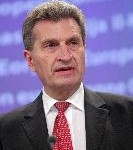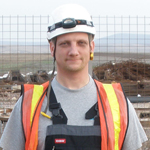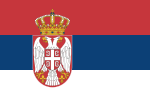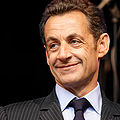 “We must act today to prepare the electricity highways of tomorrow”, urged EU Energy Commissioner Günther Oettinger at a recent conference in Brussels. He also deplored the length of time new grid lines currently take to get approved and built, saying it was “unacceptable”.
“We must act today to prepare the electricity highways of tomorrow”, urged EU Energy Commissioner Günther Oettinger at a recent conference in Brussels. He also deplored the length of time new grid lines currently take to get approved and built, saying it was “unacceptable”.
The Commissioner particularly underlined the need to integrate the offshore wind potential of north-western Europe into an EU-wide power grid.
While stressing the urgent need to act and speed up grid development, Commissioner Oettinger also emphasised the key role of the markets in funding the large majority of the grid upgrades.
 London in Victorian times and beyond was infamous for its thick smog, caused by the extensive burning of coal industrially and domestically, which cloaked the city and made its inhabitants ill. A century or so down the line, the air of Europe’s cities may not be quite so polluted, but we still appear to have a lurking appetite for coal, and a growing appetite for gas.
London in Victorian times and beyond was infamous for its thick smog, caused by the extensive burning of coal industrially and domestically, which cloaked the city and made its inhabitants ill. A century or so down the line, the air of Europe’s cities may not be quite so polluted, but we still appear to have a lurking appetite for coal, and a growing appetite for gas.
In 2010, Europe installed more coal power plants than it decommissioned for the second time in 12 years.[1] EWEA’s 2010 statistics show that while 1,550 MW of coal capacity was taken offline, 4,056 MW were added. Simply put, we added 2.5 GW of coal – the equivalent of about five new power plants.
At a time when the EU rightly prides itself on its leading role in international climate negotiations, its world-class renewable energy industry and forward-thinking climate and energy legislation; when more wind and other zero-carbon power capacity is installed in Europe year on year; when a majority of EU citizens are alarmed by the reality of climate change; it is worrying that we are installing more of the world’s dirtiest, most harmful fossil fuel.
 Over 200,000 people make the European wind industry tick. Who are they and what exactly do they do? Wind Directions met some ’wind workers’ to find out.
Over 200,000 people make the European wind industry tick. Who are they and what exactly do they do? Wind Directions met some ’wind workers’ to find out.
Martin Mortensen spends most of the year out of his home country, Denmark. A commissioning engineer with Suzlon for nearly 11 years, Mortensen’s job involves starting up the newly installed turbines and running tests to make sure everything is fine. He also does update work and trains service staff.
His long time in the industry means he remembers when a 900 kW machine seemed huge, and people said “Wow! We won’t be able to get any bigger than that!” Now he works with Suzlon’s 2.1 MW turbine.
 Serbia is dealing with a sluggish economy while it tries to develop a much-needed renewable energy sector.
Serbia is dealing with a sluggish economy while it tries to develop a much-needed renewable energy sector.
The Balkan nation currently relies on coal and oil, but has a significant renewable energy potential. The country’s first 6 MW of installed wind energy capacity are due to come online this year.
Currently, 25% of Serbia’s electricity comes from hydro power, and wind looks set to become the next renewable power source to contribute to the mix, with about 100 MW expected by the end of 2012.
 France officially joined the offshore wind power sector on Tuesday with an announcement by President Nicolas Sarkozy that the government would initially invest more than €10 billion on sea-based wind farms off northern France.
France officially joined the offshore wind power sector on Tuesday with an announcement by President Nicolas Sarkozy that the government would initially invest more than €10 billion on sea-based wind farms off northern France.
About 10,000 jobs will be created in the French offshore wind energy sector, Sarkozy said, adding the first 600 wind turbines are to be installed in five areas off Normandy, Brittany and Loire-Atlantique.
“Our aim is to have an outstanding national sector emerge to build the means to produce these offshore wind turbines and to look towards exporting them,” Sarkozy was quoted as saying.
 “We must act today to prepare the electricity highways of tomorrow”, urged EU Energy Commissioner Günther Oettinger at a recent conference in Brussels. He also deplored the length of time new grid lines currently take to get approved and built, saying it was “unacceptable”.
“We must act today to prepare the electricity highways of tomorrow”, urged EU Energy Commissioner Günther Oettinger at a recent conference in Brussels. He also deplored the length of time new grid lines currently take to get approved and built, saying it was “unacceptable”.






 Comments
Comments



